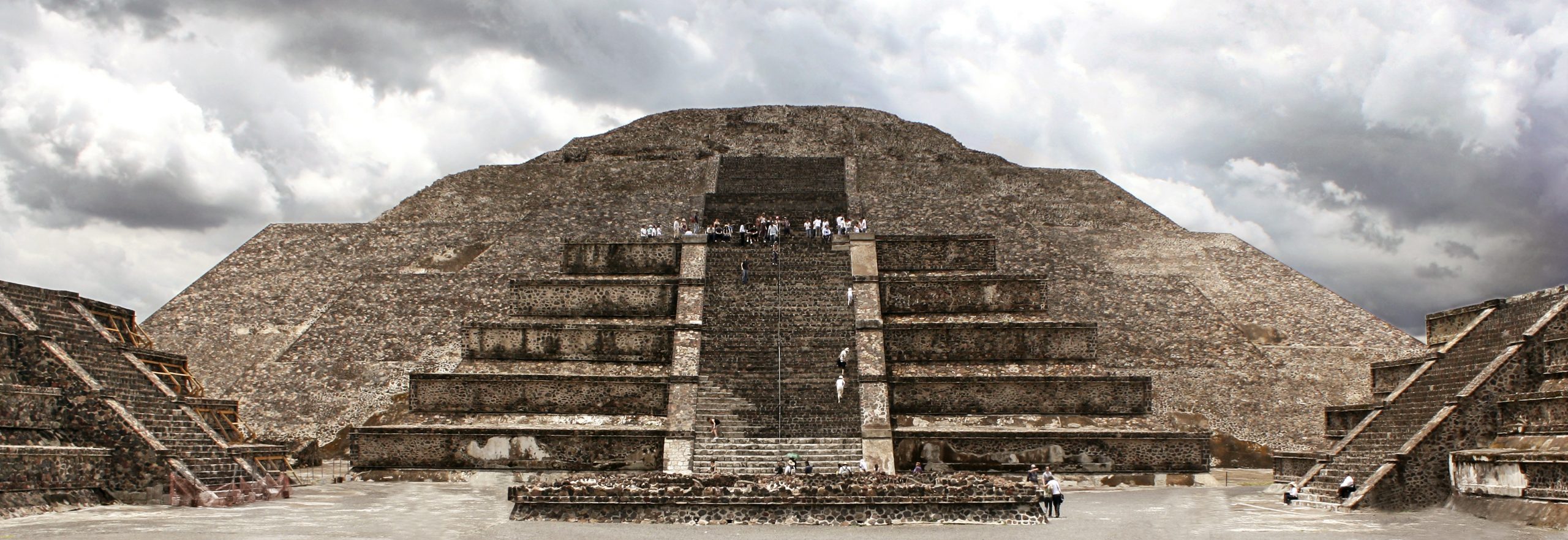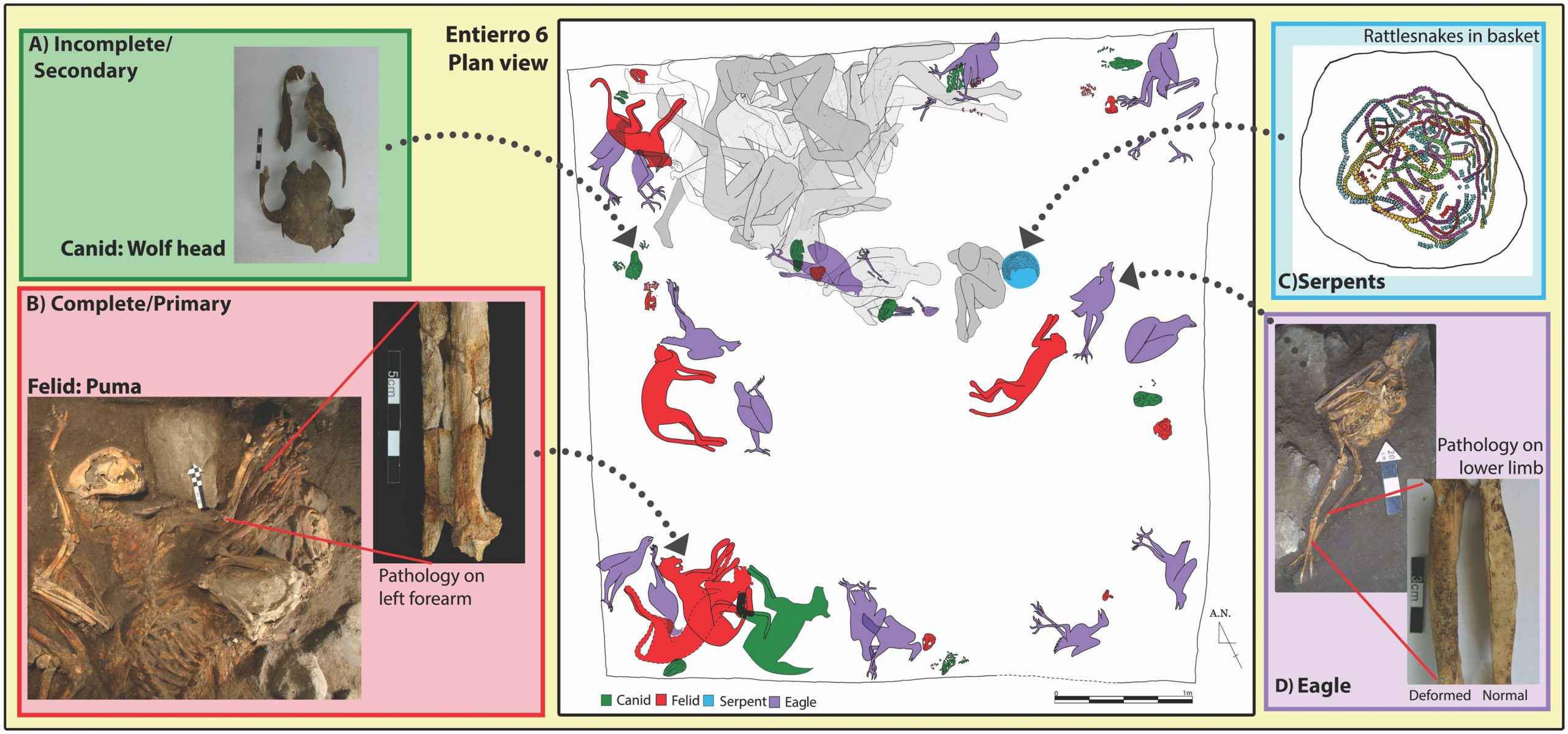Pumas, Wolves, and Eagles, Oh My! Early Captive Carnivore Remains Found in Ancient Mexican Ruins
From Roman gladiatorial combat to Egyptian animal mummies, capturing and manipulating wild carnivores has long been a way for humans to demonstrate state or individual power. Historians and scientists alike have attempted to determine when humans first began to use carnivores to establish their place on the social ladder, one of the earliest examples being Moctezuma’s 14th century zoo at the Aztec capital of Tenochtitlan. A recent PLOS ONE study, however, reveals evidence from the ruins of the Mexican city of Teotihuacan that may push back the date of captivating carnivores by 1000 years.
Between the first and sixth centuries A.D., Teotihuacan was one of the largest and most powerful urban cities in Mesoamerica and was home to at least 25,000 people. When the city reached the height of its influence around 1300-1500 A.D., its architects designed massive temples to show off the city’s power. The ruins of three of these incredible temples still stand: the Temple of Quetzalcoatl, the Pyramid of the Sun, and the Pyramid of the Moon, shown below.
During excavations from 1998-2004, the authors of this study found rare artifacts and human and animal remains in chambers in the Pyramids of the Sun and the Moon. The authors focused the present study on the 194 animal remains, as they are evidence of one of the largest known animal sacrifices in Mesoamerica. An illustration of the remains found in a chamber in the Pyramid of the Moon is shown below.
Of particular interest to the authors were the remains of carnivores like wolves, eagles, jaguars, and pumas, as we have little information about how humans related to carnivores prior to Montezuma’s zoo in Tenochtitlan. Using isotope analysis and visual inspection of the bones, the authors were able to draw possible conclusions about the relationship between the carnivores in the chamber and the ancient inhabitants of Teotihuacan.
Visual examination of the animal skeletons suggested that some of the carnivores were kept in captivity. The authors found bone breaks and stress characteristic of captive animals – for example, three eagle skeletons showed stress on the lower part of the legs, where they may have been tied to a perch. This can be seen in panel D of the image of an eagle skeleton below. Other deformities in the animal skeletons, such as bone fusion or abnormal growth, were evidence of infection, which typically only occur when animals are kept in close together in captivity.
Isotope analysis provided further evidence of captivity. This technique involves studying the elements present in organic remains; certain isotopes can make their way into an animal’s bones based on what they eat or drink. Analysis of the ancient carnivores’ bones showed that many of the animals found in the Pyramids had high levels the carbon isotope C4, which is known to be present in corn (or maize)—a food cultivated and consumed by humans living in Teotihuacan, and not likely consumed by wild carnivores.
The authors also tested the animal bones for nitrogen isotopes. Level of nitrogen isotopes can reflect an animal’s place in the food chain. Animals that eat only plants have lower levels of nitrogen isotopes, while carnivores like eagles, big cats, and wolves, have higher levels of nitrogen isotopes.
The bones of two pumas found in the Pyramids had very high levels of both carbon and nitrogen isotopes. According to the authors, the presence of carbon isotopes may suggest that the cats ate maize fed to them by human caretakers. Carbon may also have been introduced if the cats were fed rabbits or other herbivores who ate maize that were kept in captivity by humans. In addition, high levels of nitrogen in the puma bones suggest that they ate omnivores that were higher up the food chain– perhaps dogs, or even humans. Taken together, the authors believe that this evidence shows that the pumas were kept in captivity, and may have eaten humans as a part of an ancient ritual. Historians believe that carnivores were often linked to human sacrificial ceremonies throughout ancient Mesoamerica based on art throughout the region. Art found at Teotihuacan includes this type of imagery, including a drawing thought to depict a puma eating human hearts depicted below.
While we can’t know for certain whether the carnivores found in the ruins of Teotihuacan were ever fed human sacrificial victims, the bones of the animals in the city’s ruins may provide the earliest example of carnivores kept in captivity in the Americas. According to the authors, their findings also provide insight into ancient Mesoamerican culture, and suggest a connection between keeping powerful predatory animals in captivity and power of the state. Oh my!
Citation: Sugiyama N, Somerville AD, Schoeninger MJ (2015) Stable Isotopes and Zooarchaeology at Teotihuacan, Mexico Reveal Earliest Evidence of Wild Carnivore Management in Mesoamerica. PLoS ONE 10(9): e0135635. doi:10.1371/journal.pone.0135635
Images: Pyramid of the Moon, Teotihuacan, Mexico from Dimitry B., Figure 1, Figure 3, Figure 4




